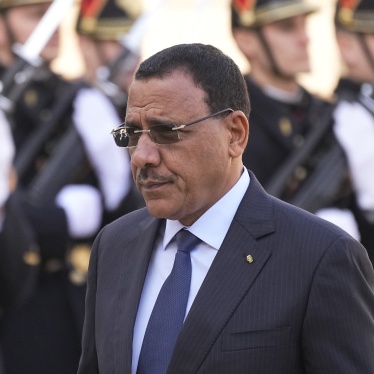(New York) – All governments should ensure that women and girls with disabilities are included in gender-based violence prevention and response programs, Human Rights Watch said today. Ahead of International Women’s Day, March 8, 2015, Human Rights Watch has published a resource on gender-based violence designed for people with disabilities.
Women and girls with disabilities are at increased risk of gender-based violence in their homes, schools, institutions, and the community at large. Nevertheless, women and girls with disabilities are often excluded from prevention programs, support services, and access to legal redress due to stereotypical views about their sexuality, physical and communication barriers, and lack of materials in accessible formats.
“Information on gender-based violence needs to reach the people who need it most, especially women and girls with disabilities,” said Shantha Rau Barriga, disability rights director at Human Rights Watch. “Women and girls with disabilities are too often the victims of violence, yet get too little information on where to go for help.”
The resource, produced in easy to read language was developed in collaboration with disabled persons’ organizations (DPOs) and gender-based violence service providers, especially in Zambia, where Human Rights Watch did recent research on the issue as part of a report on HIV and people with disabilities.
The resource shows how to recognize, prevent, and protect against gender-based violence, including by distinguishing between “good” and “bad” touch, and explains how to seek legal, medical, and psychosocial support. A supplementary document provides information on places where people with disabilities can seek help in Zambia.
The World Health Organization estimates that 35 percent of women worldwide experience gender-based violence in their lifetime. Women and children with disabilities are disproportionately vulnerable to violence. People with disabilities are up to three times as likely as others to be victims of physical abuse, sexual abuse, and rape. They face multiple forms of discrimination, including on the basis of their gender and disability – making them more isolated, marginalized, and vulnerable to violence. Adults and children with psychosocial or intellectual disabilities are among the most vulnerable – with nearly four times the risk of experiencing violence.
In 2014, Human Rights Watch documented the vulnerability of women and girls with disabilities to sexual violence in Zambia. Women with disabilities in Zambia told Human Rights Watch that they were less able to negotiate safe-sex practices, including the use of condoms, because of pressure from intimate partners and the fear of being abandoned. More than a third of these women had been victims of intimate partner sexual and physical violence.
Abuses by family members and primary caregivers against children with disabilities may be the hardest to detect, Human Rights Watch found. In one case in Zambia, staff from a shelter for victims of gender-based violence were called to investigate the abuse of a 16-year-old girl with an intellectual disability who had given birth to three children, the suspected result of rape by her father. Community health workers and parents of girls with intellectual disabilities told Human Rights Watch that many parents kept children with disabilities locked indoors, fearing sexual violence against them.
Human Rights Watch also documented abuse against women and girls with disabilities in India, including 54 cases of verbal, physical, and sexual abuse against women and girls with psychosocial or intellectual disabilities at the hands of caretakers in institutions.
For women and girls with disabilities, their experience of violence often remains hidden and unaddressed due to the multiple barriers they face in accessing sexual and reproductive health, psychosocial, and criminal justice services. For example, in Uganda, Human Rights Watch found that women with disabilities who experience rape find it especially difficult to get help because of inaccessible transportation and healthcare facilities, and lack of confidential sign language interpretation. In Turkey, Human Rights Watch found that emergency shelters in many cities were inaccessible to women with disabilities.
Worldwide, children with disabilities are often excluded from school, where they can receive sexuality education. In Zambia, Human Rights Watch found that even when children with disabilities are able to attend school, they are often not included in programs providing HIV prevention and life skills instruction, or the materials are not in formats accessible to them. In many countries, information about gender-based violence is not provided in braille, large print, simplified formats, or sign language.
Governments should implement legislation to address violence against women and girls with disabilities, Human Rights Watch said. Governments, United Nations agencies, donors and disabled persons’ organizations should work together to ensure inclusive prevention and protection services. Services should include accessible information and facilities; adequate training of counselors, health workers, teachers, and police officers on communication with people with disabilities; and involvement of people with disabilities in community-level mobilization against gender-based violence.
“The disability community needs information on violence developed in consultation with them or else they will continue to be isolated and ignored,” Barriga said.







